
NATIONAL MUSEUM OF AFRICAN AMERICAN HISTORY AND CULTURE
Washington, D.C.
a collaboration with Moody•Nolan
"This will not only be a vessel of protection, collection and knowledge, but
a space of transformation.”
– Queen Quet, Gullah/Geechee Nation
The journey begins moving down an alley of American Elms along Washington Mall. A polyrhythmic mass of stone, the Rock, ordered as if by tectonic shift, slowly reveals itself rising from the earth amidst the urban-scape. Beckoning fissures in this stone upheaval reveal an aura within. At the Confluence Entry, the visitor travels along an experience adorned with the haptically transformative qualities of wood and water, light and sound, texture and timbre. The visitor’s entire trajectory through the Rock; from the confluence of the entry ramps, down to the quiet reflection of still waters in The Vessel, through the ascent of sequential galleries to the Sankofa Nest, to the culminating brilliance of the Crystal, abstracting critical episodic emotional states of despair and triumph throughout the African American legacy.
The spirit of convergence and gathering, historically rooted in the African American Praise House or Church, defines the strength, perseverance and unity in the cultural symbol of the Rock. Within the Rock we plant a symbolic tree, evoking the power of the historic 1500-year-old Angel Oak on John’s Island, South Carolina, a witness to the masses of Africans arriving there. This imagined oak transforms into an ascending network of branches above - Sankofa Nest.
Following the Passage beyond the Confluence, and entering the Vessel evokes the memory of the ominous and brutal Middle Passage. Digital streams paint the exterior surfaces of the branches of the Digital Sankofa Nest above and flicker as sheltering digital leaves over the Museum just as the Angel Oak gave a place to the new inhabitants that came to stand beneath its branches.
From the Vessel - which synthesizes the Outer hall, Memorial Hall and the Interior Courtyard - we arrive at the first gallery landing and moving into the sequence of History galleries, which invoke the West African notion of Sankofa, incorporating the practice of carrying the fruits of knowledge from the past for the betterment of our collective futures. This cultural heirloom of Sankofa is a spiritual companion guiding our epic journey and climaxed by an emergent crystalline gem, clearly visible both inside and out, suggestive of the Crystal Mountains of West Africa, inspiring cultural memory.
Continuing forward and upward from the History Galleries, through aperture and shadow, the visitor travels through a series of polyrhythmic gallery sequences whose weaving path of encounter describes a dynamic ascendance along the uphill journey to freedom, equality, and accomplishment. The journey culminates in the Make a Way Somehow Gallery with a window toward the White House, where the pinnacle of American opportunity and citizenship is held up to the light, further emphasizing the cultural ascent built upon hope, independence, and the pursuit of happiness; the quintessential American legacy.
The living atmosphere of our proposal absorbs and illuminates the teachings, struggles and triumphs of African American culture, which then become lessons - inextricably connected to each visitor. The atmosphere engendered in the Rock highlights the culture’s circuitous, yet persistent movement towards brighter futures and translates the trajectory of pitfalls and accomplishments that define African American culture. A fountain of knowledge, diagrammed by the building itself, sprouts from the evolving legacy of the culture’s case hardened roots, leaving a powerful imprint on the American landscape, nourishing the branches of the future generations of America.
The strength and spirit of the Rock – Praise House, Church - have provided a place of restoration, support and pride, for people of African descent in North America since their arrival. The entry convergence flows down like the waters that feed the tree that “shall not be moved”. The tree, which grew from the branches of Africa, stretching to the soil of North America, resonates for not just African Americans, but all Americans. Just as the drums signal the call to return to the past, the rhythms and polyrhythmic textures of the museum sound out an invitation to the passersby, initiating the visitor’s journey of Sankofa.
Just as the space beneath the great oak within the Rock, the space within the NMAAHC will be a place in which people will gather to reconnect themselves to the energy that has brought African Americans through the struggles and triumphs while re-instilling the connection with the earth.
The Bulfinch gatepost at the entry of the wetlands recalls the origins of the land and speaks of enslaved West African contributions made to American technology and prosperity. Africans brought new life and new vitality to the continent by bringing wetland cultivation practices and water management technologies common to their coastal home. West African ingenuity became American tradition in the building of levees, ditches floodgates and drains. Beginning at the gatepost, a boardwalk outlines a path through this historical marker that describes a technology that is at the core of the central idea of the NMAAHC, to continually recharge the African American institution, while renewing America in the process.
Whether quickly returning by stair or elevator, or by extending the exit by retracing the Sankofa Nest, one’s footsteps ultimately leads them back to the convergent point of the NMAAHC, Central Hall. In this moment, the visitors mingle, discuss, and share the power of the Rock with one another, a final exchange under the great tree, just before exiting and sharing that power with the world.






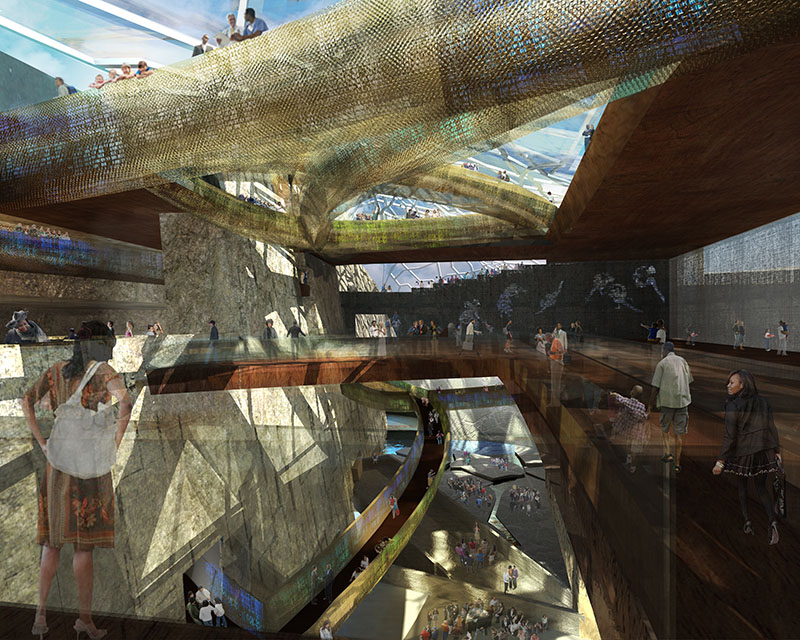
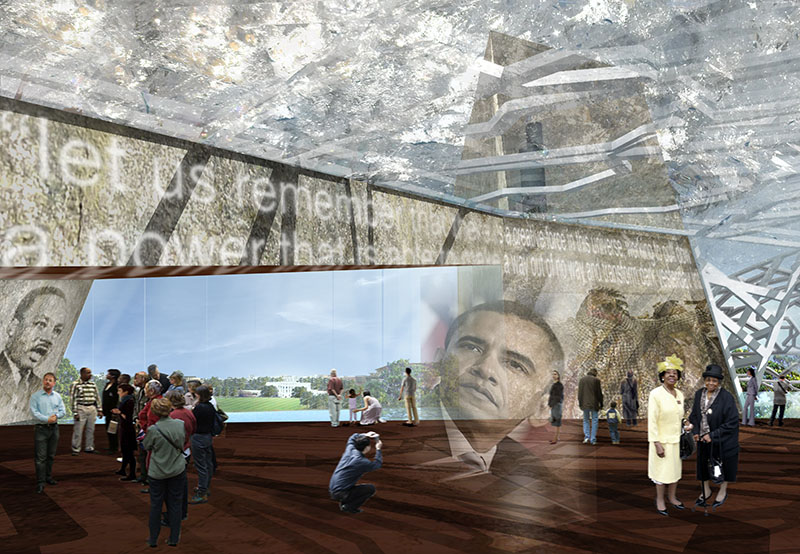
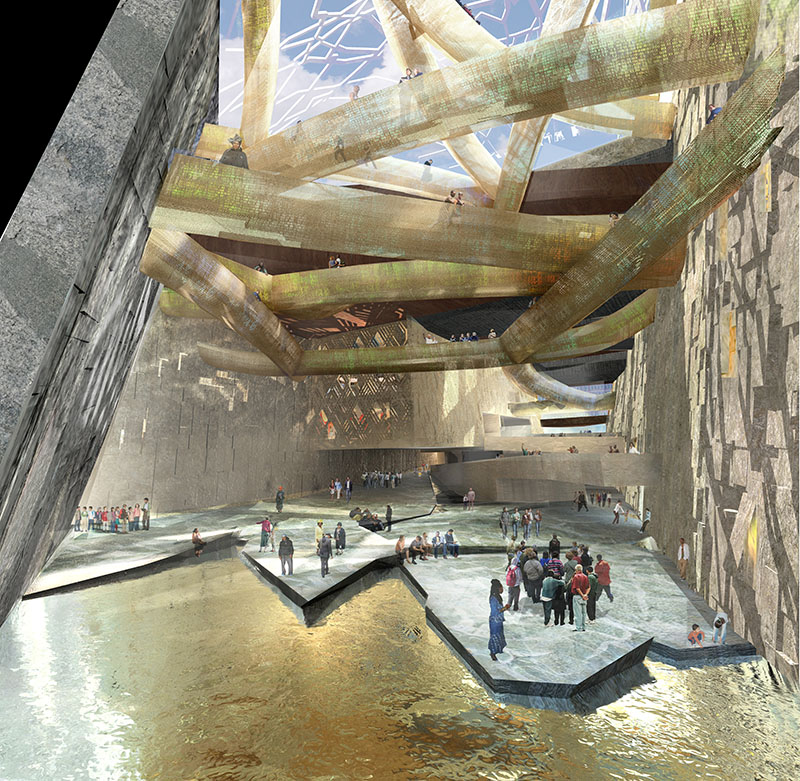

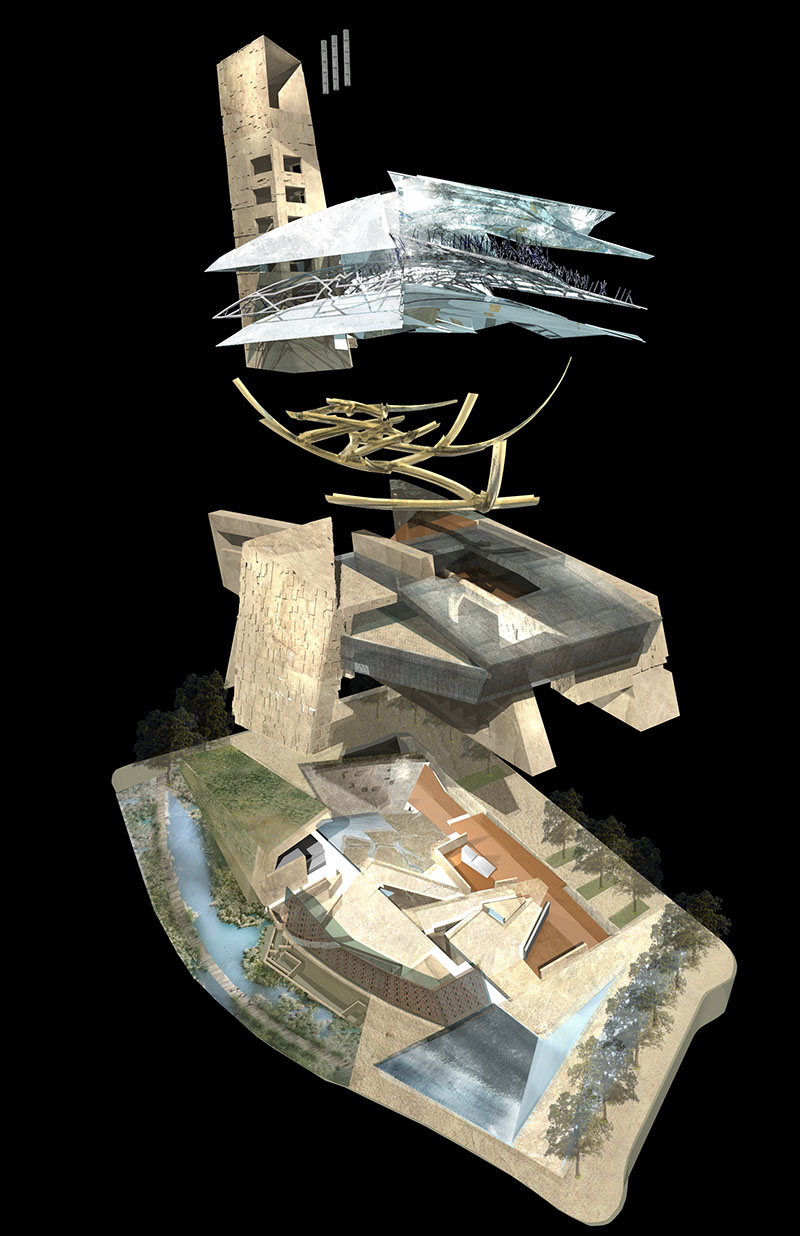
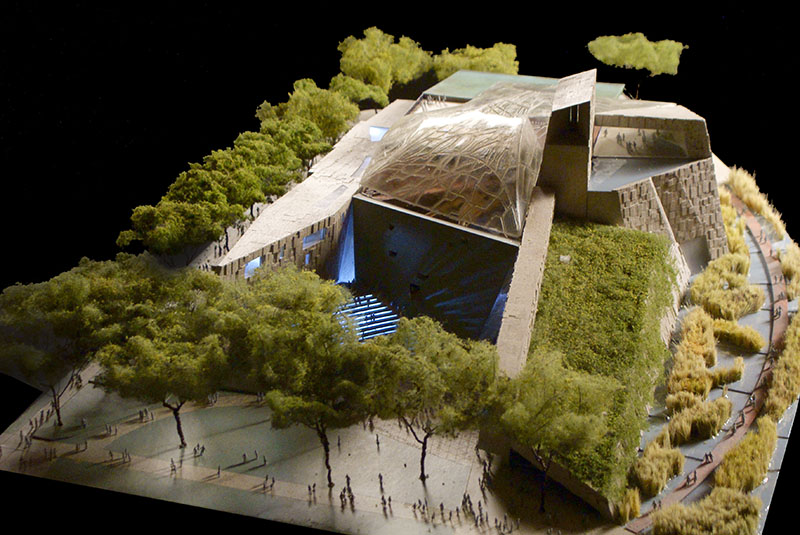
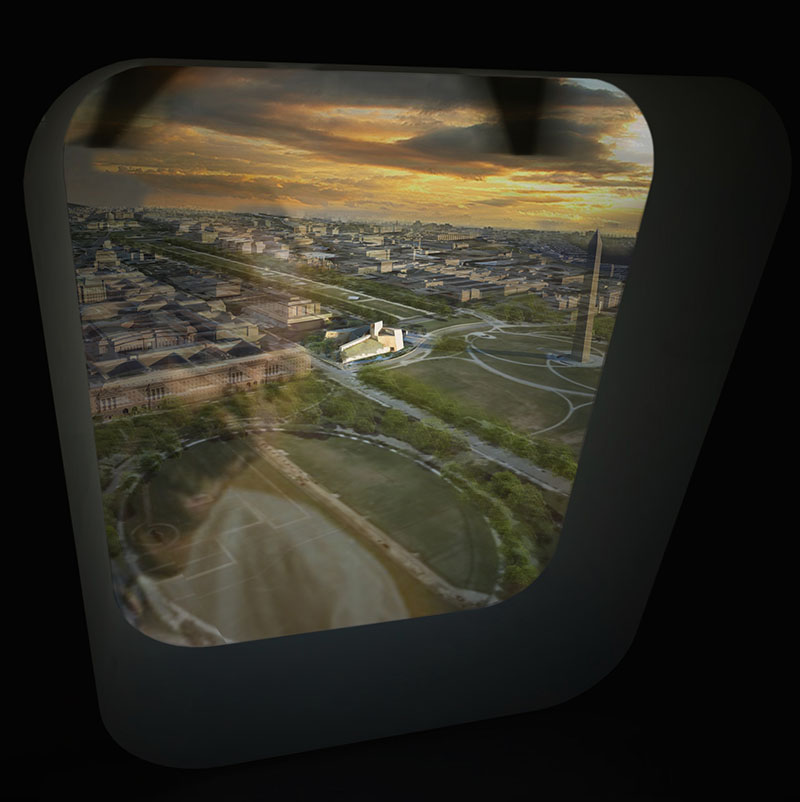
| PROJECTS | TEACHING | CONTACT |